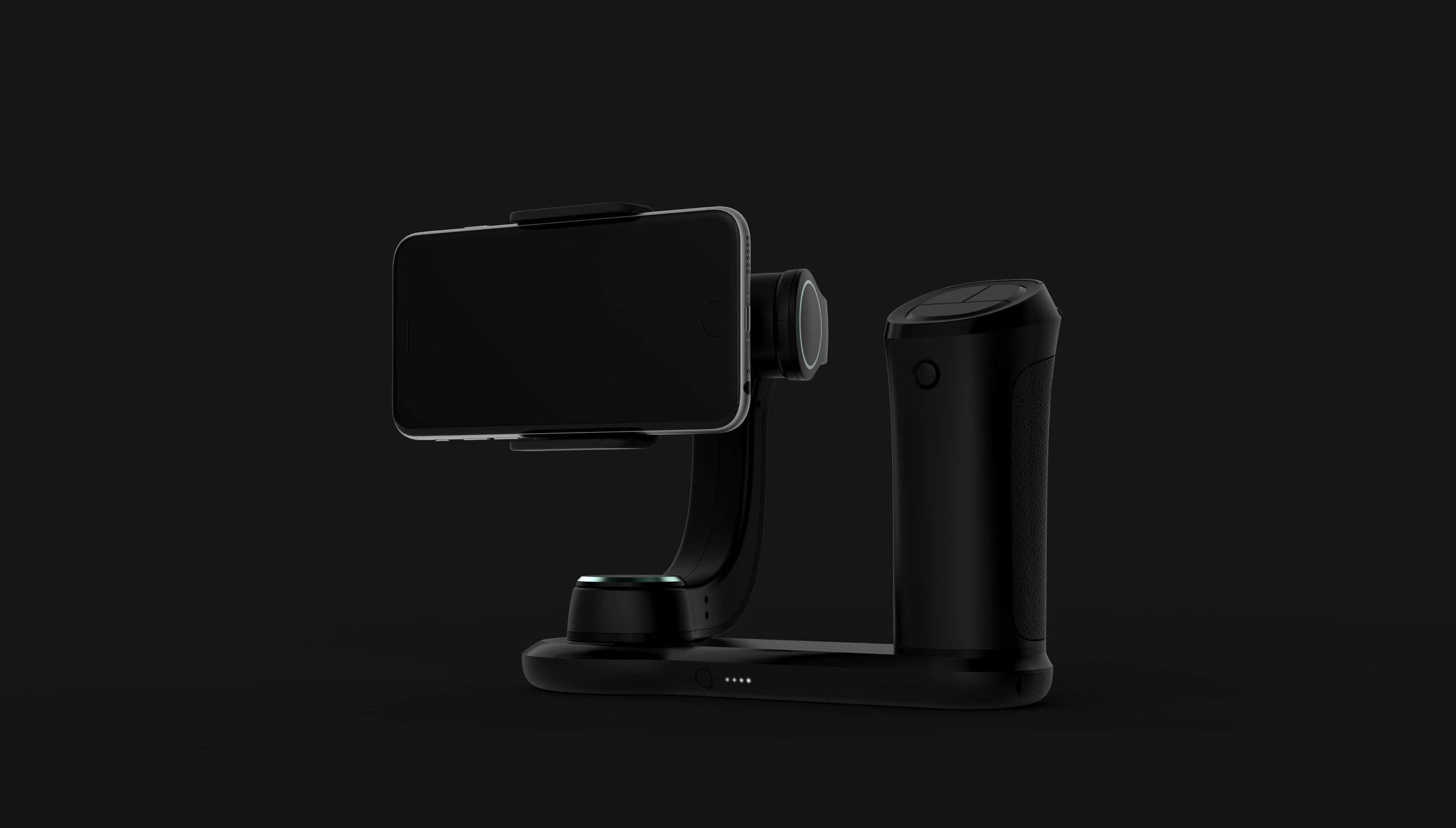
FREEFLY designs, manufactures, and markets camera movement systems and camera stabilizers used in cinematography including unmanned aerial vehicles for aerial cinematography, gimbals, and remote controlled vehicles. The question they proposed was how do we get pro equipment (left) into the hands of everyone who has a smartphone (right)?
Scope of work included: user research, creating user personas, architecture & form explorations, usability & ergonomic studies through quick iterations, rapid prototyping, mechanical engineering, CMF explorations, and design for manufacturing.

















